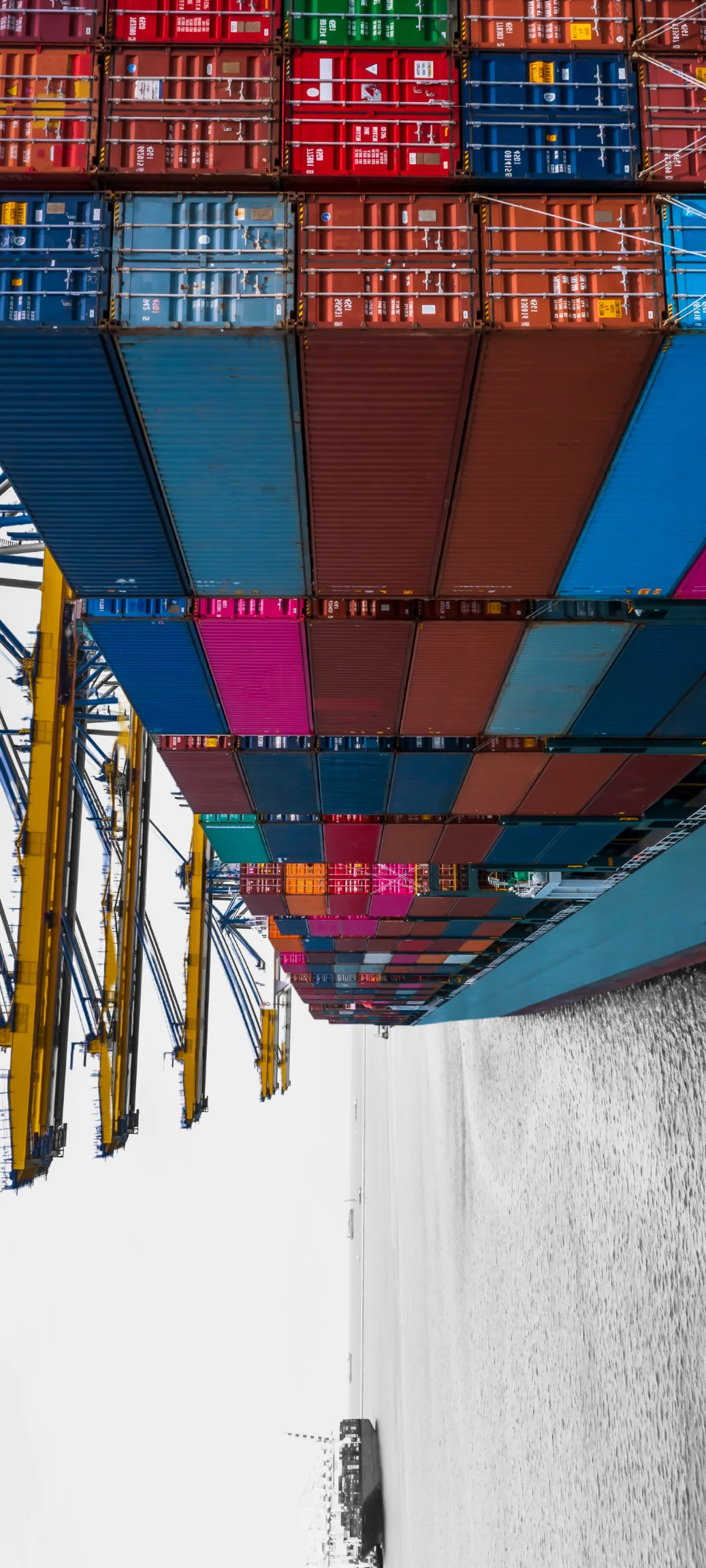
The Ever-Changing Freight Industry: LTL and Truckload Trends
The key factors that shape the industry, such as economic conditions, market trends, regulatory impacts, and challenges like driver shortage.
A 2024 Perspective
The freight industry 2024 continues to be shaped by various challenges and opportunities. From economic fluctuations to technological advancements, the freight sector has evolved significantly since the COVID-19 pandemic began reshaping global markets. For business owners and operators, keeping up with these changes is more important than ever, as market conditions directly impact the logistics strategies necessary to keep supply chains running efficiently.
Less-than-truckload (LTL) and truckload (TL) shipping trends are at the forefront of these changes. Factors like economic conditions, legal regulations, driver shortages, capacity issues, public health crises, weather conditions, seasonality, and technological advancements play critical roles in shaping the industry. Understanding these trends is crucial for building a robust shipping strategy and identifying gaps in your logistics approach. Below, we break down the key elements that shape LTL and TL trends in 2024.
Thousands of businesses trust FreightCenter to move their freight faster, smarter, and cheaper! From unbeatable rates to top-notch service, our customers are raving about their shipping success.
See why they keep coming back!
Award-Winning Service, Trusted by Shippers Everywhere!
- 2021, 2017 & 2016 Food Logistics’ Top Green Providers
- 2021 & 2018 Supply & Demand Chain Executives’ Pros to Know: Matthew Brosious
- 2020 & 2019 Top Food Logistics’ 3PL & Cold Storage Provider Award
- 2020 & 2019 Business Observer’s Top 500 Companies on the Gulf Coast
- 2020 & 2017 SmartWay® Transport Partner
- 2020 & 2017 Food Logistics’ Champions: Rock Stars of the Supply Chain
- 2020 Best of Palm Harbor Awards for Local Businesses
- 2017 Green Supply Chain Award from Supply & Demand Chain Executive
- 2017 Tampa Bay Business Journal Heroes at Work
- 2016, 2015, & 2012 Food Logistics Top 100 Software and Technology Providers
- 2013 Tampa Bay Business 100 by Tampa Bay Business Journal
- 2013 Top 100 Great Supply Chain Partners by SupplyChainBrain
- 2012 TIA Samaritan Award Honorable Mention
- 2012, 2011 & 2010 TBBJ Fast 50 Recipient
- 2013, 2011, & 2010 Diversity Business Top Businesses

Why Use FreightCenter?
Choosing FreightCenter means partnering with a top logistics provider that simplifies your shipping needs. Here’s why FreightCenter stands out:
1. Comprehensive Solutions
From Less-Than-Truckload (LTL) to Full Truckload (TL) and specialized freight, we handle it all. Get tailored solutions for any shipping requirement.
2. Vast Carrier Network
Access competitive rates and reliable service with our broad network of trusted carriers. Enjoy flexible options and top-notch performance.
3. Advanced Technology
Utilize real-time tracking, easy integration, and automated solutions to streamline your shipping processes and stay informed.
4. Expert Support
Benefit from personalized support and strategic advice from our knowledgeable team, ensuring smooth and efficient shipping.
5. Flexible and Scalable
Adapt to changing shipping needs with our scalable solutions and custom options, perfect for growing businesses.
6. Customer Satisfaction
Experience transparent pricing, on-time delivery, and a commitment to continuous improvement. We prioritize your needs and ensure a hassle-free experience.
FreightCenter offers the expertise, technology, and support you need for efficient and reliable shipping. Choose us for a seamless logistics experience.
Understanding the Differences Between Less-Than-Truckload and Truckload Shipping
Before diving into the specific trends, it’s essential to understand the fundamental differences between LTL and truckload shipping.
Depending on your cargo’s nature and particular shipping needs, one type may be more advantageous. These differences go beyond just the size of the shipment or the selection of carriers. LTL and TL shipping markets are influenced by various factors, including industry trends that affect how you ship and what you pay.
LTL Shipping
Less-than-truckload (LTL) shipping involves sharing space on a truck with other shippers’ cargo. It’s akin to a rideshare service but for freight. In this scenario, your shipment doesn’t require a full truckload to be transported. LTL shipping is a popular option for businesses that need to ship smaller quantities of goods but want to save on costs. Generally, LTL freight shipping follows these guidelines:
Shipment Size
LTL is ideal for palletized or crated shipments to reduce shipping rates and minimize the risk of damage. Cargo typically weighs between 150 and 15,000 pounds.
Cost Determination
Freight rates are calculated based on the weight and dimensions of the shipment, allowing for optimal load capacity.
Capacity Sharing
Multiple shippers share space in a single truck, reducing costs but potentially increasing the transit time due to numerous stops.
Truckload Shipping
In contrast, truckload (TL) shipping involves the exclusive use of an entire truck trailer. This method is generally used for larger shipments, where the cargo is either too heavy, oversized or requires a whole truckload of space. Truckload shipping is ideal for:
Large or Oversized Items
Heavy machinery, oversized items, or bulky goods that require more space.
High-Volume Shipments
Shipments that are 15,000 pounds or more or consist of 10 or more heavy palletized loads.
Special Handling
These goods require special handling or faster delivery times, with no need to share space with other shippers.
Now that we’ve outlined the fundamental differences between LTL and truckload shipping, let’s explore the factors shaping these shipping methods and their trends in 2024.
Factors Impacting LTL Freight Rates
Several interconnected factors affect LTL freight rates. A small error in calculating any of these factors can lead to costly billing adjustments. Here are the primary factors impacting LTL freight rates in 2024:
1. Weight and Dimensions
Accurate measurements and weight are critical for LTL shipments. Carriers use advanced equipment to weigh and measure shipments once picked up. Suppose there’s a discrepancy between what the customer reports and what the airline finds; a billing adjustment will be issued to the customer. Inaccuracies can significantly increase shipping costs, making it vital for shippers to provide precise information upfront.
2. Density
Density plays a significant role in determining LTL freight costs. Dense shipments take up less space on a truck, which means lower costs. For example, shipping 50 pounds of bricks would cost less than shipping 50 pounds of feathers because the bricks are denser and require less space on the truck. Shippers who can maximize the density of their shipments will see cost savings.
3. Freight Classification
The National Motor Freight Traffic Association (NMFTA) categorizes freight into different classes based on several factors, including density, storability, handling, and liability. These freight classes help ensure standardized pricing across the industry. The weight and thickness of your shipment directly influence its classification, which in turn affects pricing.
The LTL shipping industry has experienced significant changes over the past few years, mainly driven by the growth of eCommerce, shifting consumer behavior, and supply chain disruptions. Here’s what we can expect in 2024:
1. eCommerce Growth
The continued rise of eCommerce has been a significant driver of LTL shipping demand. As more consumers shift to online shopping, businesses of all sizes respond by expanding their eCommerce capabilities. This shift has created a surge in demand for LTL services, as small to medium-sized companies need reliable and cost-effective shipping options for delivering products to customers. With online retail showing no signs of slowing down, LTL shipping will remain an essential part of the supply chain.
2. Capacity Constraints
Capacity constraints remain a significant challenge for the LTL industry. Several factors, including the ongoing driver shortage, regulatory changes, and the lingering effects of the COVID-19 pandemic, have exacerbated tight capacity. In 2024, capacity issues will persist, increasing shipping costs and extending delivery times. Businesses that rely on LTL shipping must be prepared to navigate these challenges by optimizing their logistics strategies and planning for potential delays.
3. Technological Advancements
Advances in technology are also shaping the future of LTL shipping. Adopting transportation management systems (TMS), artificial intelligence (AI), and machine learning is helping carriers and shippers optimize routes, improve efficiency, and reduce costs. Additionally, real-time tracking and data analytics provide greater visibility into shipments, allowing businesses to make more informed decisions.
Factors Impacting Truckload Freight Rates
Truckload freight rates have been highly volatile in recent years, with several key factors influencing pricing. In 2024, the following factors are expected to continue shaping the truckload market:
1. Supply and Demand
The balance of supply and demand remains one of the most critical factors affecting truckload freight rates. The availability of drivers and equipment directly impacts capacity, while economic conditions, consumer spending, and industrial production influence demand. In times of high demand and limited supply, truckload rates tend to rise. Conversely, rates may stabilize or decline when demand softens or capacity increases.
2. Fuel Prices
Fuel costs are another significant factor impacting truckload rates. As fuel prices fluctuate, so do fuel surcharges, passed on to customers. In 2024, fuel price volatility is expected to continue due to geopolitical tensions, changes in global oil production, and environmental regulations. Shippers should closely monitor fuel trends and factor potential surcharges into their budgeting.
3. Regulatory Changes
The trucking industry is subject to a wide range of regulations, and changes to these regulations can directly impact truckload rates. For example, the Electronic Logging Device (ELD) mandate, which requires drivers to use electronic devices to track their service hours, has affected driver availability and capacity. In 2024, new regulations related to emissions, safety, and labor practices could further influence the truckload market.
Truckload Shipping Trends in 2024
The truckload industry has seen considerable fluctuations over the past few years, driven by economic disruptions, labor shortages, and supply chain challenges. Here’s a look at the key trends shaping truckload shipping in 2024:
1. Continued Driver Shortage
The ongoing driver shortage remains a significant challenge for the truckload industry. With many drivers reaching retirement age and lacking new industry entrants, capacity constraints are expected to persist. In response, carriers invest in recruitment and retention efforts, offering higher wages, improved benefits, and better working conditions. However, addressing the driver shortage will require long-term solutions, such as increased training programs and enhanced industry outreach.
2. Shift to Sustainable Practices
Sustainability is becoming an increasingly important consideration in the truckload industry. Carriers are adopting greener practices, such as investing in fuel-efficient vehicles, exploring alternative fuels, and reducing carbon emissions. Shippers also prioritize sustainability in their logistics strategies, seeking eco-friendly carriers and optimizing routes to minimize environmental impact. In 2024, the push toward sustainability is expected to accelerate, driven by consumer demand and regulatory pressures.
3. Growth in Contract and Spot Rates
Contract rates, which represent agreed-upon rates between shippers and carriers, comprise most of the truckload market. However, spot rates, determined by market conditions and used for one-time shipments, have become more volatile in recent years. In 2024, the gap between contract and spot rates will narrow as carriers adjust their pricing strategies to account for changing market dynamics. Businesses that rely on truckload shipping should stay informed about rate trends and consider diversifying their carrier relationships to mitigate risk.
To create value for our customers by delivering customized shipping solutions that meet their unique needs and to fulfill shipping demands from simple to complex with expertise, guidance and ingenuity.
LTL, or "Less-Than-Truckload," is a shipping method in the freight industry designed for transporting smaller freight loads that don't need a full truck.
Full Truckload (FTL) shipping with FreightCenter offers businesses a dedicated and efficient transport solution for large shipments.
Expedited shipping is a service for freight shipments that require faster delivery than usual. Carriers prioritize these shipments over standard ones, resulting in fewer stops and delays during transit.
Specialized freight involves transporting goods that need special handling, equipment, or expertise because of their unique characteristics, size, shape, or sensitivity. This service provides customized solutions to meet the specific needs of the cargo being transported.

Regulatory and Environmental Challenges
Regulatory changes and environmental considerations continue to shape the freight industry. LTL and truckload carriers must navigate a complex regulatory landscape while meeting growing sustainability demands.
1. Regulatory Compliance
Compliance with federal, state, and local regulations is a top priority for carriers and shippers. The freight industry is subject to many rules, including safety, emissions, and labor practices. Here are some key regulatory issues to watch in 2024:
Hours of Service (HOS) Regulations: HOS regulations govern the number of hours truck drivers can work daily and weekly. These regulations are designed to prevent fatigue-related accidents but also impact capacity and delivery times. Changes to HOS rules can affect how carriers schedule their drivers and manage their fleets.
Emissions Standards: Environmental regulations to reduce greenhouse gas emissions are becoming more stringent. Carriers must comply with emissions standards set by agencies like the Environmental Protection Agency (EPA) and the California Air Resources Board (CARB). Compliance may require investing in newer, more fuel-efficient vehicles or retrofitting existing equipment with emissions-reducing technology.
Labor Laws: Changes to labor laws, such as driver classification and minimum wage requirements, can impact carriers’ business costs. For example, legislation that reclassifies independent contractors as employees could lead to higher labor costs for carriers that rely on owner-operators. Shippers should stay informed about labor law changes that could affect their logistics partners.
2. Sustainability Initiatives
Sustainability is no longer a “nice-to-have” for businesses—it’s necessary. Consumers, investors, and regulators are increasing pressure on companies to reduce their environmental impact. This means adopting greener practices and reducing carbon emissions in the freight industry. Key sustainability trends include:
Electrification of Fleets: The push for electric vehicles (EVs) is gaining momentum in the freight industry. Major carriers invest in electric trucks to reduce carbon footprint and comply with emissions regulations. While the widespread adoption of electric trucks is still in its early stages, advancements in battery technology and charging infrastructure are making EVs a more viable option for freight transportation.
Alternative Fuels: Besides electrification, carriers explore alternative fuels like hydrogen, natural gas, and biodiesel. These fuels offer a lower-carbon alternative to traditional diesel, helping carriers reduce emissions. However, the availability and infrastructure for alternative fuels vary by region, which can affect adoption rates.
Sustainable Packaging and Shipping: Shippers also play a role in sustainability by adopting eco-friendly packaging materials and optimizing their shipping practices. For example, reducing packaging waste and using recyclable materials can help lower the environmental impact of shipments. Additionally, optimizing routes and consolidating shipments can reduce fuel consumption and emissions.
LTL and Truckload Trends FAQ
Q. What are the current trends in LTL shipping?
LTL shipping is growing due to increased eCommerce and higher demand for secure moving of small to medium shipments.
Q. How are Truckload (TL) rates changing?
TL rates are fluctuating due to supply and demand, fuel prices, and economic factors, with spot rates rising to match contract rates.
Q. What factors impact both LTL and TL shipping?
Key factors include driver shortages, technology advancements, weather disruptions, and the growth of eCommerce.
Q. How does technology affect freight shipping?
Technology improves efficiency and reduces costs through automation, real-time tracking, and data analytics.
Q. What are the opportunities in the freight industry?
Opportunities include global expansion, cross-border e-commerce, and innovations in supply chain management.
3 Advantages of Understanding Freight Trends

Cost Effective
By Staying informed about current trends, you can optimize your shipping strategy, avoiding unexpected cost by fluctuating rates or market conditions.

Improved Planning
Understanding trends helps you anticipate challenges like driver shortages or weather disruptions, allowing for better planning and fewer delays.

Comparative Advantage
Leveraging the latest industry insights ensures that your business remains comparative, responding quickly to changes in demand and customer needs.





